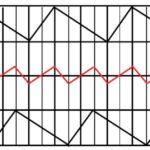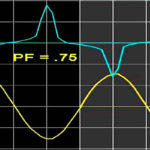 Dialog Semiconductor plc announces the release of the DA914X-A product family of extremely efficient, high current, automotive grade, step-down DC-DC (Buck) converters.
Dialog Semiconductor plc announces the release of the DA914X-A product family of extremely efficient, high current, automotive grade, step-down DC-DC (Buck) converters.
The DA914X-A devices deliver unprecedented current levels, up to 40 amps, a significantly better alternative to power solutions that require a combination of a power controller and discrete FETs. The DA914X-A family integrates power FETs and all required control logic into a highly integrated, highly efficient monolithic device. Few external components are required for operation, enabling extremely low system BoM costs and solution footprints below 170 mm2. The devices are extremely power efficient, reducing the thermal design challenges of powering complex automotive SoCs with very high current requirements. This makes the product line ideal for powering graphics or AI embedded processors used in machine learning and vision applications for next-generation autonomous vehicles.
The DA914X-A family currently includes two devices. The DA9141-A operates as a single-channel, quad-phase buck converter, delivering up to, 40A output current. The DA9142-A operates as a single-channel, dual-phase buck converter, delivering up to, 20 A output current. All devices have an input voltage range of 2.8 V to 5.5 V and an output voltage range of 0.3 V to 1.3 V, making them suitable for a wide variety of low-power systems.
The DA914X-A products include several key features to meet the needs of today’s complex automotive electronics systems: Multi-Phase operation delivers better transient performance, lower losses, better efficiency, optimized thermal dissipation, and minimized ripple current and voltages, when compared to a, single-phase architecture; Lower PCB costs and smaller components with lower overall heights for low profile applications; Flexibility offers the opportunity to optimally place the Inductors and capacitors close to the point of load; Distributed power dissipation –more even distribution of heat – critical for efficient thermal management; Remote sensing guarantees the highest accuracy and supports multiple PCB routing scenarios without loss of performance; Fully programmable soft-start limits the inrush current from the input to give a slope-controlled output voltage; Dynamic Voltage Control (DVC) enables adaptive adjustment of the supply voltage dependent on the load. This increases efficiency when the downstream circuitry enters low power or idle mode, resulting in power savings; Configurable GPIOs support a range of features including I2C, DVC, and Power Good indicator;
The DA914X-A devices are AEC-Q100 Grade 1 qualified and are available in a
4.5mm x 7.0mm, 0.6mm pitch 60-pin FC-BGA package. Industrial/Commercial grade versions are also available.







Leave a Reply